Dodge Charger ABS Light On: Causes and Resetting Tips
Like most modern cars, the Dodge Charger comes with an anti-lock braking system for added safety when braking hard. But being an electrical component, it is not unusual for it to malfunction, causing the ABS light to come on.
So, what are the causes of the Dodge Charger ABS light on? The causes range from insufficient brake fluid in the master cylinder reservoir to a defective ABS control module. Sometimes, it can be a faulty wheel speed sensor, a blown ABS fuse, or low battery voltage. The light can also come on due to issues with your Charger’s tire pressure.
But how do you diagnose and fix all these issues? In this guide, you will find the answers.
Causes of Dodge Charger ABS Light On
Your Dodge Charger ABS light will come on when the anti-lock brake system is malfunctioning. The causes of this problem include the following.

1. Inadequate Brake Fluid
Brake fluid plays a significant role in the overall performance of your Charger’s braking system. Therefore, if the computer senses abnormally low fluid levels on your 2012 Dodge Charger, it can cause the ABS light to come on.
The common causes of reduced brake fluid levels in your vehicle are worn-out brake pads and leakage.
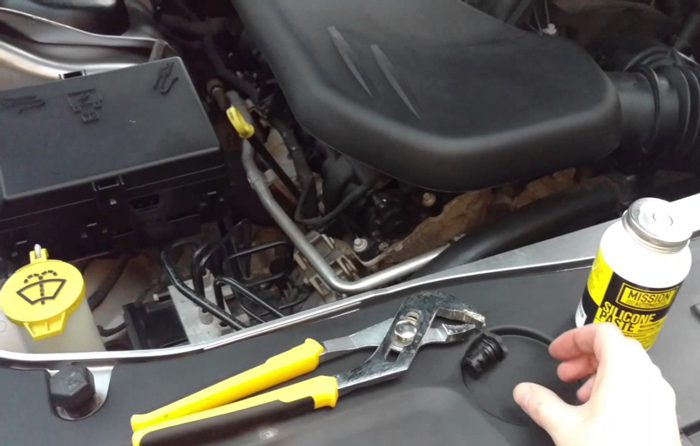
Diagnosing and Fixing
To determine if you have low levels of brake fluid in your Charger and fix the problem, follow these steps:
- Step 1: Under the hood, find the brake master cylinder reservoir at the rear of the engine compartment.
- Step 2: Examine the fluid level against the maximum and minimum lines on the outside of the reservoir.
- Step 3: If the levels are near the minimum line, open the reservoir cap and add more brake fluid to the maximum line.
Additionally, you should check the condition of the brake pads and replace them if worn out. Also, inspect the brake fluid line for possible leaks and repair them.
2. Faulty ABS Control Module
Another cause of 2017 Dodge Charger ABS light on is a defective ABS module. The ABS control module processes information from the speed sensors, helping regulate brake fluid pressure. This helps prevent wheel lockup. So, when this module becomes faulty, your Charger’s brakes may lock up unnecessarily, causing the ABS light to come on.
Diagnosing and Fixing
If you want to diagnose a faulty ABS module, you use an OBD-II scanner to scan for error codes. Generally, if the module is defective, you will get the error code U0121. The code stands for Lost communication with the ABS module.
Once you have confirmed the control module is faulty, you can choose to rebuild or replace it. However, since this is an incredibly complex chore, you should let a skilled mechanic handle it.
3. Defective or Dirty Wheel Speed Sensor (s)
The ABS speed sensors help your Dodge Charger’s ABS system determine when to engage. They do this by monitoring your vehicle’s wheel speed and rotation.
So, when these sensors become dirty, broken, or defective, they will detect the incorrect speeds. As a result, the ABS system will deactivate, causing the ABS indicator light to illuminate on your 2016 Dodge Charger SXT.
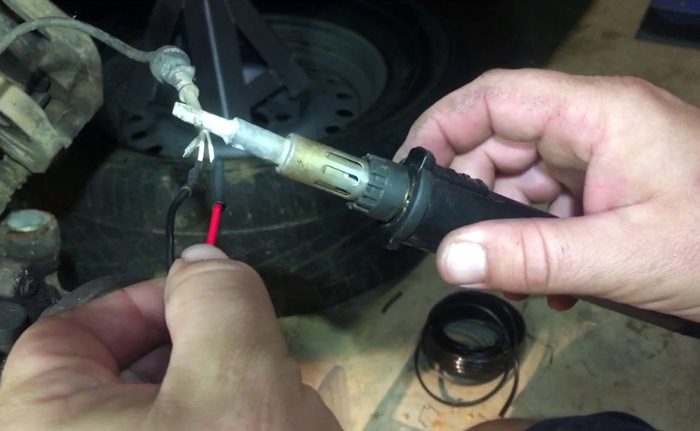
Diagnosing and Fixing
One way to diagnose the wheel speed sensors is to physically inspect the wiring and connectors. Simply examine them for signs of damage, dirt, or corrosion. If dirty and corroded, clean them using a wire brush. If damaged, replace the wiring.
Another way to diagnose faulty ABS sensors is to connect an OBD-11 scanner to your Charger and read the error codes. The codes make it easy to determine the specific sensor that is faulty, and they include:
- C0031 code for faulty left front speed sensor
- C0034 code for faulty right front speed sensor
- C0037-1D code for faulty left rear speed sensor
- C003A-1D code for faulty right rear ABS sensor
Once you have determined which sensor is faulty, the next thing is to replace it. Here is how to do it:
- Step 1: Unhook the negative battery terminal.
- Step 2: Use jack stands to raise your vehicle.
- Step 3: Take out the wheel with the faulty sensor and brake caliper to access the sensor.
- Step 4: Unscrew the mounting bolt securing the sensor.
- Step 5: Disconnect the wiring harness to the sensor. Then, remove the faulty speed sensor.
- Step 6: Install the new speed sensor in reverse order.
4. Issues with the Tire Pressure
When your Charger’s tire pressure is low, the wheel’s size or circumference is also affected. This means the affected tire will not rotate at the same speed as the rest. As a result, the ABS sensor will recognize it, causing the 2013 Dodge Charger ABS warning light to come on.
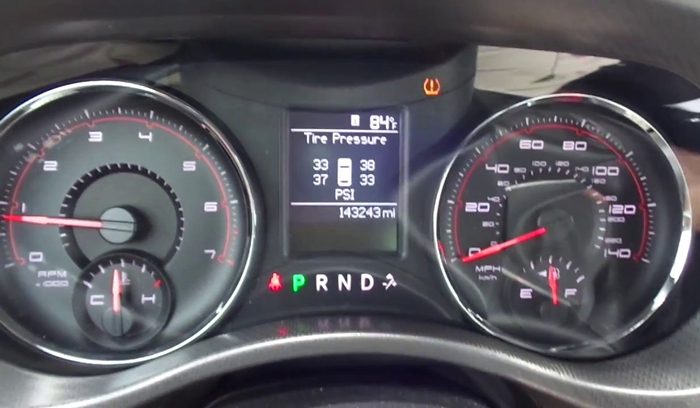
Diagnosing and Fixing
If the tire pressure is low, the Tire Pressure Monitoring System (TPMS) indicator light will also illuminate. However, you can also use a gauge to check your Charger’s tire pressure if it is at the recommended psi. To fix this problem, follow these steps:
- Step 1: Add air to the tire with low pressure.
- Step 2: Use a gauge to confirm that all the wheels have the recommended tire pressure, which is generally between 32 and 35 psi.
- Step 3: Drive your Dodge Charger for about 20 minutes, above speeds of 15 mph to reset the light.
5. Blown or Bad Fuse
The anti-lock braking system is an electrical component equipped with its own fuse. So, if the fuse blows up, the ABS will stop working, causing your 2010 Dodge Charger ABS indicator light to come on. A blown fuse will also cause the wheels to lock up.
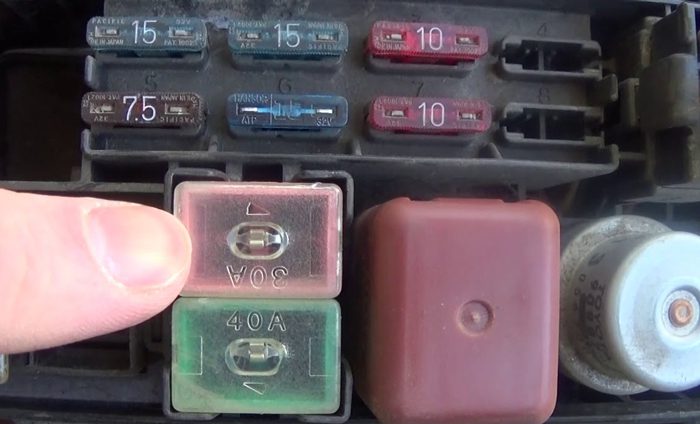
Diagnosing and Fixing
Below are steps on how to identify a blown ABS fuse and replace it to fix the ABS light problem.
- Step 1: Open the hood and locate the ABS fuse. You can check your Charger’s owner manual or the fuse box cover to determine its correct location.
- Step 2: Remove the fuse and check for metallic or dark smear inside the glass. If you spot it, the fuse is blown.
- Step 3: Alternatively, use a multimeter to test the fuse for resistance. If the tool displays “OL” or beeps, the fuse is blown.
- Step 4: Install a new fuse with the same amperage rating as the old fuse.
6. Low or Weak Battery
When the battery voltage is low or weak, your Charger will experience a drop in electrical power. This can cause the different electrical components of your car to malfunction, including the ABS. As a result, your 2010 Dodge Charger ABS light will also be triggered.
Diagnosing and Fixing
To diagnose a low battery, use a multimeter to measure the battery’s voltage. If you get a reading of less than 12.4 volts, it is low. Therefore, you should recharge it using a trickle charger.
You can also recharge it by jumpstarting your Dodge Charger using another car. However, if the battery is older than 3 years, replace it with a new one.
Here is a short video you can watch on how to replace the Charger battery :
How To Reset the Dodge Charger ABS Light
There are two ways to reset your Dodge Charger ABS light if it does not turn off after fixing the underlying issue. It does not matter which Dodge Charger year model These include:

Disconnecting the Battery
Start by unhooking the negative battery cable, followed by the positive one. Then, press the brake pedal down continuously to deplete any electric power in your vehicle’s system.
Alternatively, you can turn on the headlights and press the horn button several times to drain the power. Then, reconnect the battery terminals after about 15 minutes in reverse cable.
Use OBD-2 Scanner
Get an OBDII scanner and hook it to your Dodge Charger’s on-board diagnostic port. The scanner will display fault codes if they are there. Next, clear these error codes in the ABS unit to reset the ABS indicator light.
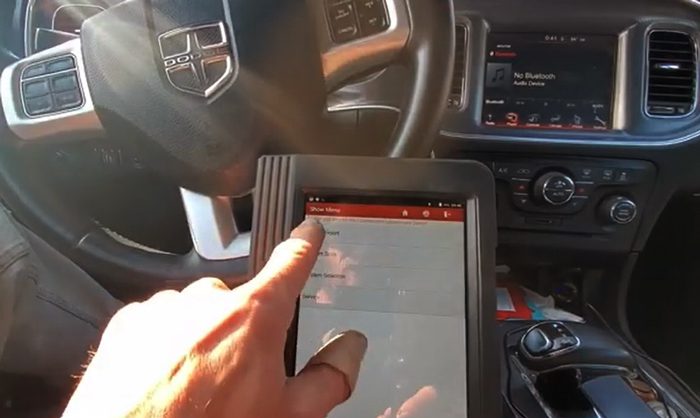
FAQs
In this section, we will respond to commonly asked questions regarding the Dodge Charger ABS light coming on.
Yes, you can. This is because even with the ABS malfunctioning, the brakes are not usually affected. You only run the risk of your vehicle’s tires becoming locked up under extreme braking.
Yes, but not directly. Typically, worn brake pads cause the brake fluid to deplete. The insufficient brake fluid in the reservoir is what causes the ABS light to illuminate.
No. During the inspection, you will have all your car’s warning lights scrutinized. Thereforefore, your Dodge will not pass the inspection because the light is an indication of something being wrong with the brake system.
Final Words
There are many reasons your Dodge Charger ABS light will come on when you least expect it, like low battery. Therefore, knowing how to diagnose the problem is essential for your safety.
The good news is that once you have diagnosed the cause of the ABS light coming on, fixing the problem is easy. Even better, resetting the warning light is a straightforward process in case it does not go away by itself.

